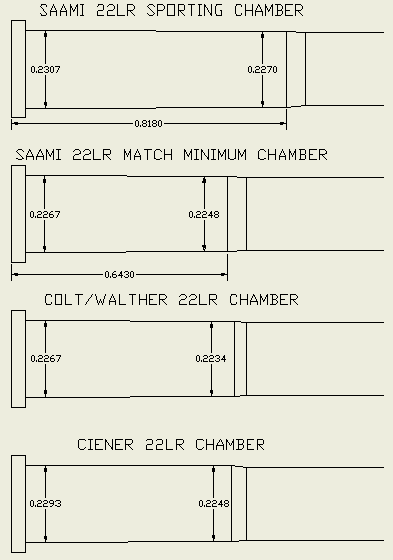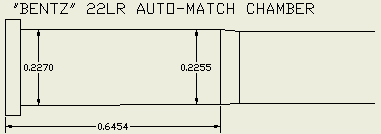During the recent government panic induced by China many entertainment venues, including my favorite bar, were shut down along with most of the economy. Some of the few activities available were the local gun ranges and I spent a fair amount of time shooting. With ammunition shortages and high prices, much of it was with 22 LR. My 22 rotation was a Ruger Mark II, a Bersa 224, and a Norinco TT-Olympia, all of which work very well and are not ammunition sensitive.
Later, when firearm availability improved I was looking for something additional like a 22 revolver and came across a slightly used Walther “Colt” Gold Cup Trophy target pistol which I purchased. I’ve also owned a Jonathan Arthur Ciener 1911A1 22LR conversion kit for a while, which I finally applied to one of my 1911’s. The Ciener was iffy with several failures to go into battery, failures to fire, and some failures to eject requiring a tap with a brass rod to remove the shell casing stuck in the chamber. The failures to fire could be fired by recocking the hammer and trying again. This was possible as the the Ciener and Walther retain the 1911 hammer. The Walther was worse with similar failures and even one detonation slightly out of battery that blew brass fragments out the ejection port. It was also very inaccurate for some reason. Now I knew why this was on the used market. Upon careful examination with a bore sized gauge I determined that there was a slight ring of lead about two thirds of the way down the barrel. A light dawned. Apparently the former owner had also experienced an out of battery ignition, that, unlike mine, stuck in the barrel. A subsequent shot cleared the blockage but not before swaging a ring of lead into the bore. I had been shooting through this existing restriction, distorting the projectiles, and causing the accuracy problems. I was able to restore the bore with an aluminum bore size scraper, lead solvent, and a fair amount of brushing. This fixed the accuracy problem but I still had the unreliability of both guns to deal with. I had tried about eight different types of 22LR ammo, both match and standard, without any observable difference. A little investigation was indicated.
Stripping the Ruger, Bersa,and Olympia I tried dropping various 22 rounds into the chambers. All brands dropped fully into the chambers without hesitation. Then I tried the Ciener and the Walther. For these, rounds dropped into the chambers stopped anywhere between 0.190″ and 0.040″ shy of battery. This was starting to make sense. The failures to fire, apparently in battery, were rounds that stopped just shy of the chamber. The first firing pin strike pushed them against the chamber lip allowing the slide to go forward fully into battery. The subsequent recocked attempt fired the round. Undersize chambers would explain all the failure events. Time for more gauges … results below.
The Ruger, Bersa, and Olympia all had SAAMI sporting chambers. The chamber labeled MATCH below is for match RIFLE chambers. As shown below that, the Walther chamber is smaller than the rifle match chamber and the Ciener chamber is similarly sized. Both are well under the sporting chamber standard size.

There is a recognized chamber for match autoloading pistols called the BENTZ. This is slightly larger than the rifle match standard chamber. Both the Ciener and Walther are distinctly tighter than this match pistol standard.

Others, Honest Outlaw for instance, have reported feeding problems with Walther 22’s … one suspects this is related.
The obvious solution is to give both to a gunsmith to have the chambers reamed out to the sporting dimensions but as I have an accurate small lathe and this is, after all, a hobby I decided to do it myself. Both the Ciener and Walther barrels are removable which eased the lathe set-up. I obtained a Manson Precision .22 LONG RIFLE FINISHER sporting chamber reamer from Brownells. It is necessary to finesse the Ciener ejector. (If this is not obvious then -> gunsmith) I indicated in the four jaw and the tailstock with a Jacobs taper chuck to hold the reamer concentric to <0.0005″. The main points here are to use a very slow speed, cutting oil, be very careful of the Ciener ejector as you feed the reamer, and most important, do not allow the shoulder of the reamer to contact the feed ramp on the barrel as you get close to bottom. If you nick the feed ramp you will probably ruin the barrel. You will NOT be able to run the reamer all the way in. This is not necessary as the cut described is completely sufficient to fix the feeding and reliability problems with the Ciener and Walther. As I finally found a 22 revolver, I now have six choices in my 22 rotation. 🙂
Please leave any comments in my comments post.
